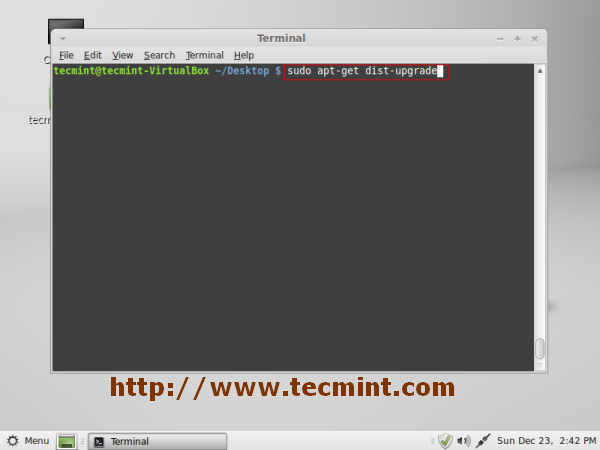

- #Sudo apt upgrade kubuntu install#
- #Sudo apt upgrade kubuntu update#
- #Sudo apt upgrade kubuntu driver#
#Sudo apt upgrade kubuntu install#
It will not install the package if it is not already installed. With that option, the apt command will only upgrade an already installed package. This is why the -only-upgrade part is necessary. If you run the apt install command on an already installed package, it will be upgraded to the next available version.īut if the package is not installed already, the apt command will also install it. If the desired package has a new version available, you can choose to upgrade only this single package with this command: sudo apt install -only-upgrade package_name Check if the package you want to upgrade is in the list of upgradable packages.
#Sudo apt upgrade kubuntu update#
The first step is to update the local package repository cache so that your system knows about the availability of new package versions. If you want to be selective about the updates and only want to upgrade a single package, use this command: sudo apt install -only-upgrade package_name

That may not be the case for Ubuntu server users where you have crucial web services running. This seems like a good thing, especially for desktop users. This includes the Linux kernel version, too. It updates all the installed apt packages that can be upgraded at once.

That package will now not show in the update manager and will not be updated.How do you update your Ubuntu system in the command line? You use the apt update (to refresh the package cache) and apt upgrade commands. When you find the package, select it and go to the Package menu and select Lock Version. Step 2 : go to Other Software tab and choose the desire PPA from the list. Go to Synaptic Package Manager (System > Administration > Synaptic Package Manager).Ĭlick the search button and type the package name. Step 3 : open Terminal (ctlr + alt + t) then sudo apt-get update, then sudo apt-get upgrade. The following approaches are limited in that locking/holding a package within aptitude or synaptic doesn't affect apt-get/apt. The recommended way to upgrade Kubuntu versions is using kubuntu-devel-release-upgrade, which opens up a GUI window. The changes will take effect immediately after exiting the elect screen. With dselect, enter the elect screen, find the package you wish to hold in its present state and press = or H. Show all packages on hold: sudo apt-mark showhold Show all packages on hold: dpkg -get-selections | grep "\ And when you want to do sudo apt-get upgrade, it takes risks.
sudo apt-get -only-upgrade installRemove the hold: echo " install" | sudo dpkg -set-selectionsĭisplay the status of all your packages: dpkg -get-selectionsĭisplay the status of a single package: dpkg -get-selections So my solution would be always upgrade specific packages you want to upgrade by doing so: sudo apt-get update. Put a package on hold: echo " hold" | sudo dpkg -set-selections
#Sudo apt upgrade kubuntu driver#
Alternatively, install the recommended driver automatically by running: sudo ubuntu-drivers autoinstall. There are different ways of holding back packages: with dpkg, apt, dselect, aptitude or Synaptic. To install a specific driver, use the following syntax: sudo apt install drivername For example, we installed the nvidia-340 driver version.


 0 kommentar(er)
0 kommentar(er)
